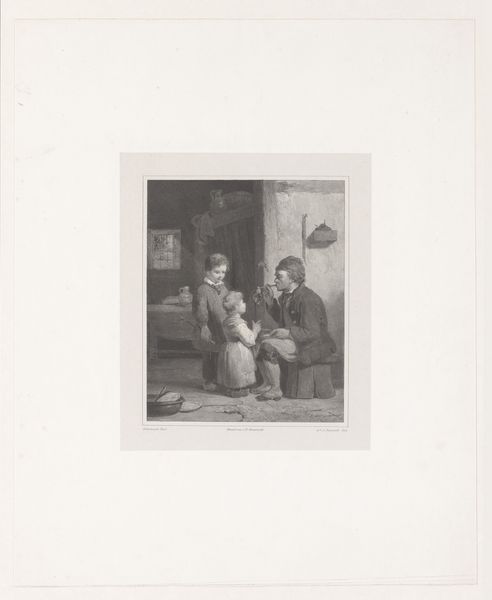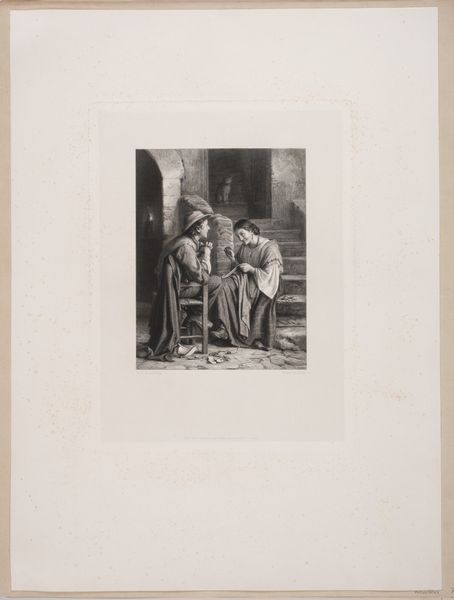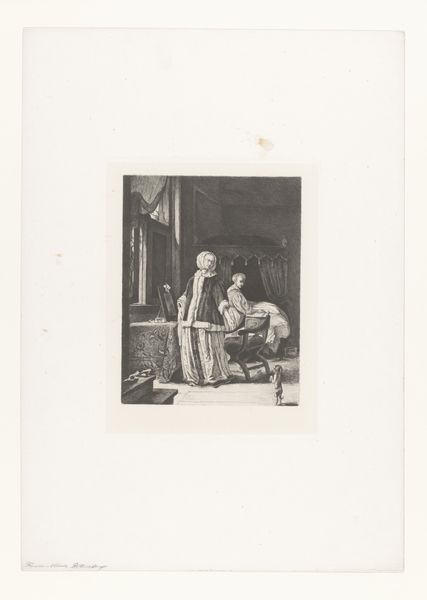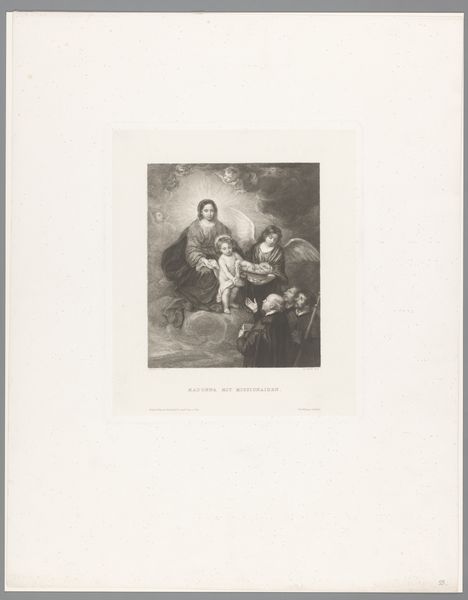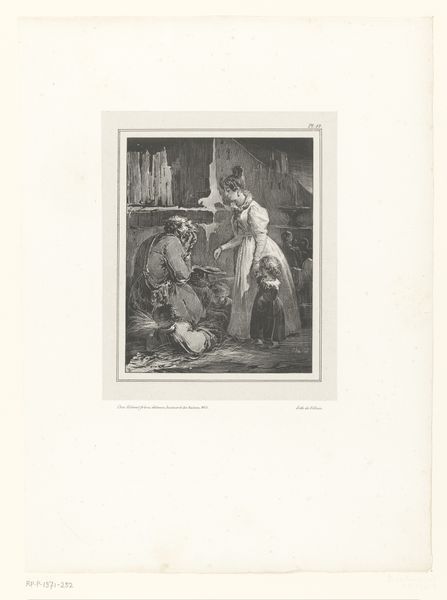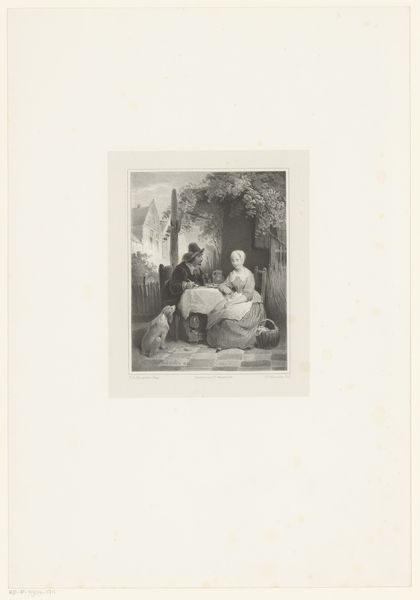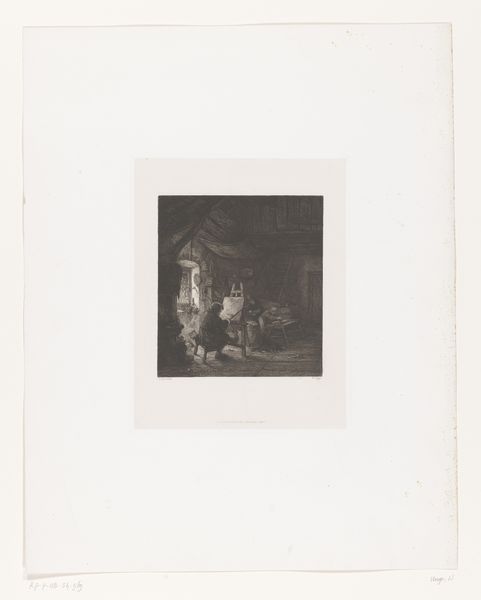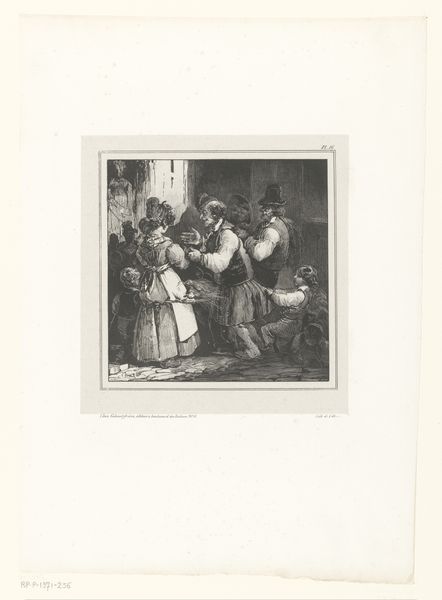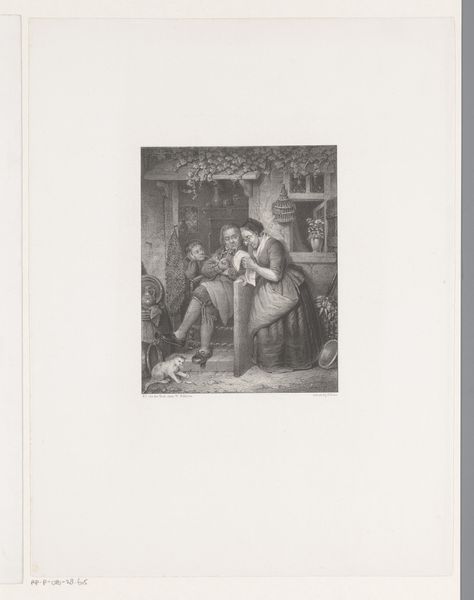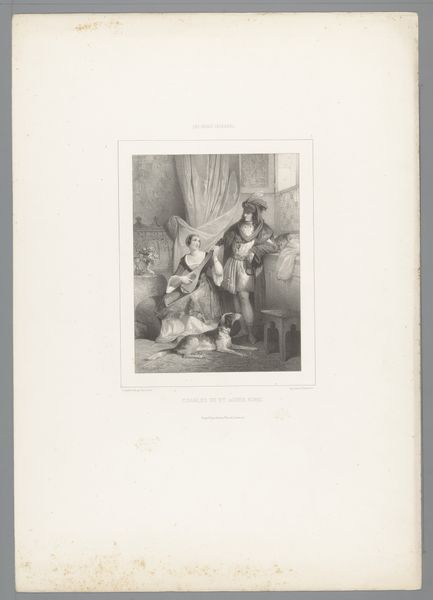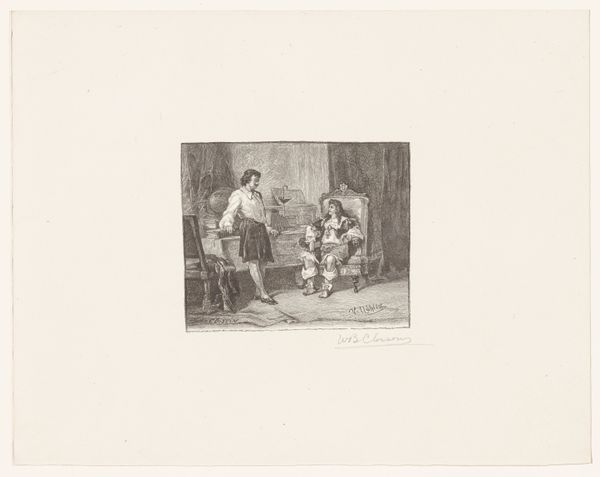
print, engraving
#
portrait
#
dutch-golden-age
# print
#
dog
#
landscape
#
figuration
#
genre-painting
#
engraving
Dimensions: height 440 mm, width 305 mm
Copyright: Rijks Museum: Open Domain
Editor: This engraving, "Dame en dienstmeid bij een wildkoopman," or "Lady and Maid at a Game Dealer's" after Carel Frederik Curtenius Bentinck, dating sometime between 1824 and 1849… it feels very staged, very much about displaying social status. What strikes you most about this piece? Curator: As a materialist, I'm drawn to consider the economic relationships embedded within the scene and the very process of producing and consuming prints. What sort of labor and commerce is involved in the production of the food we see, and how is that echoed by the labor required to make the print itself? The print acts as a kind of commodity itself, a repeatable image reflecting and participating in a system of representation and trade. Editor: So you’re thinking about the act of making the image as well as the scene it depicts? How the engraving is another form of production? Curator: Precisely. The act of engraving, a skilled labor-intensive process, transforms everyday life into an object for display and consumption. The print mediates the experience, rendering it accessible – or, perhaps, creating the desire for accessibility – to a wider audience. Consider the role of the 'wildkoopman,' facilitating access to these goods. He and the engraver, each participate in broader economies. How are they similar or different, and who can afford access to what each offers? Editor: It makes me think about the role of prints in circulating images and ideas, almost like early photographs or mass media. Curator: Exactly! The print’s reproducibility facilitates the spread of ideologies. What do you make of the contrasting textures—the smoothness of the figures’ garments versus the roughness implied by the birds' feathers? Do these details emphasize class difference via materials and access? Editor: That’s a great point. Thinking about this piece in terms of production and access definitely gives it a different dimension than just seeing it as a genre scene. Curator: It invites us to consider how art both reflects and actively shapes the social and economic realities of its time. And by looking at that, we get a deeper understanding of both the image and that history.
Comments
No comments
Be the first to comment and join the conversation on the ultimate creative platform.
